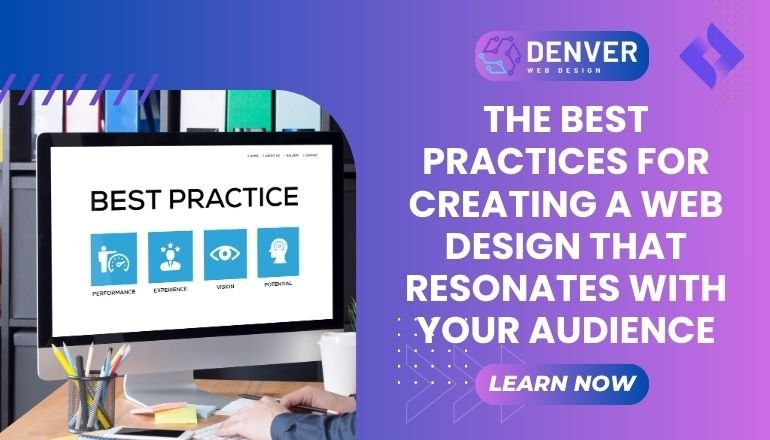
Introduction:
Creating a web design that truly resonates with your audience is vital in today’s digital age. It’s not only about how your site looks, but also how it performs. Best practices in web design can help you make the most of your website by enhancing user experience and improving SEO. When done right, responsive web design plays a critical role in engaging visitors and ensuring that businesses are accessible across all devices. Web Design Denver is a prime example of how to execute these principles for local and global business needs.
What is Web Design?
Web design encompasses everything involved in creating the visual layout, structure, and content of a website. It covers aspects like typography, colors, and multimedia use, along with the user interface (UI) and user experience (UX) elements that keep visitors engaged. Responsive web design, for instance, ensures that your website adapts seamlessly to different screen sizes, whether on desktop, tablet, or mobile. Mobile-first design and adaptive design are key strategies that contribute to this experience.
Why is Web Design Essential for Your Website?
A well-designed website can dramatically affect business success, SEO, and user satisfaction. In terms of SEO for websites, search engines prioritize mobile-friendly and fast-loading sites, meaning a responsive design directly impacts rankings. With search engine visibility being closely tied to web performance, an optimized site is more likely to appear higher in Google ranking factors. User engagement is another benefit, as clear and user-friendly interfaces result in better site navigation and more conversions. For e-commerce sites, this translates to smoother transactions and improved conversion rate optimization (CRO).
Key Features/Components of Web Design
Certain elements make a web design effective and functional. Key features include:
- Responsive Layouts: Sites must adjust to various devices, which ensures that visitors can navigate easily, no matter where they are or what device they use.
- Clear CTAs (Calls to Action): These prompt users to engage with the site’s objectives, whether it’s signing up for a newsletter or making a purchase.
- SEO-Optimized Elements: Features like fast load times, image optimization, and easy-to-understand URLs are essential for good SEO.
- UX and UI Design: Focusing on both UI (the way the site looks) and UX (the way it works) guarantees a satisfying user experience.
- E-commerce Functionality: For online businesses, it’s essential to integrate easy product listings, secure payment gateways, and intuitive check-out processes.
Best Practices for Web Design
To achieve a web design that resonates with visitors and ranks well in search engines, here are the best practices:
- Emphasize User Experience: Prioritize easy navigation, clear typography, and a streamlined layout.
- Ensure Mobile Responsiveness: Adopt a mobile-first design to cater to the increasing mobile user base.
- Focus on Speed: Slow websites drive users away. Implement image compression, browser caching, and minimize HTTP requests for a faster experience.
- Optimize Content: Write concise and engaging content. Use headlines effectively and ensure there’s enough white space for clarity.
- Leverage Visual Appeal: Use high-quality images and maintain brand consistency across the entire design.
Common Mistakes to Avoid
When planning your website, several common pitfalls should be avoided, such as:
- Ignoring Mobile Users: A design that only caters to desktop users misses a huge chunk of the market.
- Overcomplicating the Design: A cluttered site can confuse visitors, so opt for simplicity and clarity instead of overly intricate designs.
- Neglecting Speed and Optimization: Slow websites hinder performance and user retention. Test your site’s speed regularly and work on improving it.
- Neglecting SEO Principles: Missing out on basic SEO elements like meta tags, image alt texts, or having a non-optimized CMS can result in poor search engine rankings.
Conclusion: Key Takeaways
Creating a web design that appeals to your target audience and adheres to best practices not only ensures a positive user experience, but it also helps grow your business through SEO, faster load times, and mobile optimization. Implementing a responsive web design is crucial for modern success, while focusing on core web development principles will ensure you build a website that enhances user interactions, drives traffic, and boosts conversions.
Are you ready to redesign your website or enhance your web design for better SEO and user engagement? Reach out to Web Design Denver and begin transforming your online presence today!






